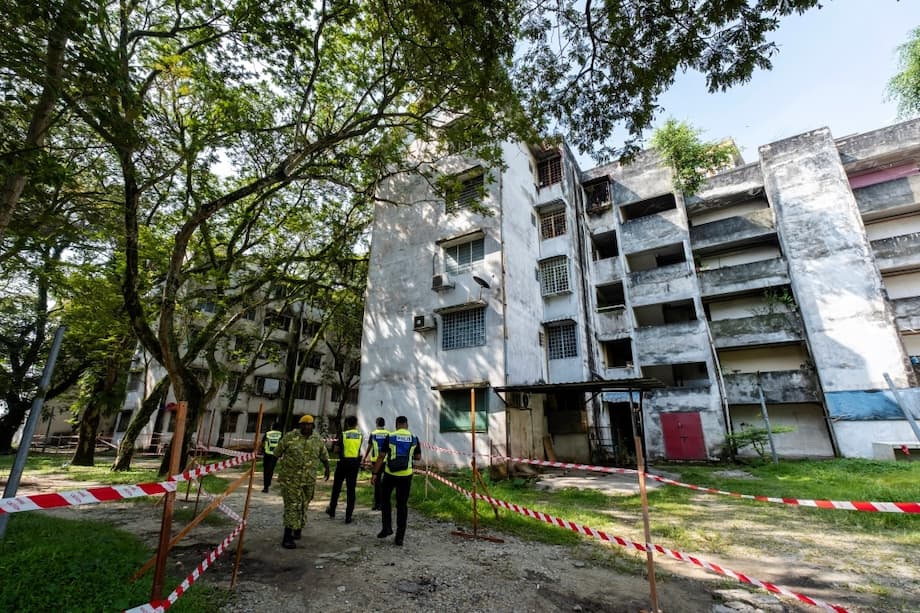Why the Bill Has Become Urgent
Malaysia’s urban fabric is aging fast. Thousands of low-rise walk ups and mid century flats built during the 1960s and 1970s now struggle with structural wear, outdated wiring, failing lifts, and cramped living spaces. Local councils face mounting complaints but limited resources. Under existing rules, a single holdout owner can stall redevelopment, even when a large majority wants it to proceed. The proposed Urban Renewal Bill, now at the heart of a heated national debate, is the government’s answer to this gridlock.
- Why the Bill Has Become Urgent
- How the Proposed Law Would Work
- What the Bill Promises Residents
- The Sharpest Criticisms: Consent, Rights and Who Gets a Say
- Compulsory Acquisition, Verification and the Role of the State
- Gentrification Risks, Costs and Long Term Affordability
- Politics, Protests and What Changes Have Been Made
- What Protection Still Needs Clarifying
- At a Glance
Housing and Local Government Minister Nga Kor Ming has framed the legislation as a safety and dignity issue for residents living in decaying buildings. He points to long neglected estates and stalled projects as evidence that the current approach is broken, with some sites abandoned for years while owners argue among themselves. States have already identified renewal candidates. A total of 534 areas were gazetted by state governments over the past decade, including 139 in Kuala Lumpur and dozens across Kedah, Perak and Selangor, among others. Political dynamics complicate matters, since some states that approved renewal sites earlier now resist the federal bill that would set a national framework to manage them.
During recent briefings, Nga described urban renewal as a mix of refurbishment, regeneration and redevelopment. It is not a simple tear down and rebuild exercise, he says, but a suite of tools to upgrade blocks, improve public spaces, add amenities, and when needed reconstruct unsafe buildings. He argues that without a law to organize these steps, aging flats will keep deteriorating, and residents, especially lower income families, will remain trapped in substandard conditions.
Introducing the plan, the minister stressed the policy’s intent to improve lives rather than displace people.
Housing and Local Government Minister Nga Kor Ming said, “Urban renewal is about giving these communities a new lease of life. It is about improving quality of life, making sure homes are safe, and creating sustainable communities.”
The scale of the problem
Officials say the backlog is large. Buildings like the Desa Bakti flats in Selayang, only three decades old, already exhibit severe disrepair. Some sites, such as the Desa Kuda Lari area in Kuala Lumpur, have remained abandoned for eight years because one owner refused to agree. Under current law, 100 percent consent is often needed, which in practice can be impossible when owners are untraceable or disputes drag on. The bill’s supporters believe a clear, fair consent rule would release many of these projects from limbo.
How the Proposed Law Would Work
The draft framework lays out a national process to identify renewal areas, obtain consent from owners, appoint qualified developers, and track delivery. It creates State Executive Committees and a Federal Executive Committee to supervise projects, certify developers, set incentives, and safeguard owners’ rights. Renewal can be initiated by the state or federal bodies, or by unanimous resolution of proprietors. Once an area is formally declared a renewal zone, work must start within 24 months, with a possible extension of another 24 months if required.
Where it applies, and what is excluded
The law would apply in Peninsular Malaysia and the Federal Territories of Kuala Lumpur, Putrajaya and Labuan. Conservation areas under the National Heritage Act 2005 are not included. The government also says Malay reserve land, customary land and heritage sites will not be part of renewal schemes under this bill.
Types of renewal
Three approaches are outlined. Urban revitalisation covers upgrades to existing buildings and surroundings, such as lifts, repainting, roofing, landscaping and community facilities. Urban regeneration addresses neglected or mismanaged buildings and common areas, aiming to restore function and safety. Urban redevelopment, the most intrusive option, involves rebuilding entire blocks when they are no longer safe or financially viable to repair.
Consent thresholds and oversight
Early drafts used different consent thresholds based on building age and condition, dropping as low as 51 percent for unsafe or abandoned structures. After strong feedback from lawmakers and civil society, the government has pledged a single, higher rule: 80 percent consent across all projects. It also plans to amend a clause to require that demographic data be considered during planning, meant to avoid sudden shifts in community composition. The government says this balance is needed to respect minority owners while preventing a single holdout from blocking progress indefinitely.
The process includes reports, stakeholder consultations and, if approved, gazettement of renewal areas by the state authority. The Federal and State Executive Committees would monitor compliance. Developers must meet capital and track record requirements. Holding companies can be held responsible for subsidiaries’ failures if they control management. In some upgrade scenarios, local authorities may serve notice and recover costs if proprietors do not act. The draft also discusses mediation to help resolve disputes.
What the Bill Promises Residents
Government agencies have presented a set of guarantees intended to reassure owners who fear displacement or unfair terms. The central pledge is to keep original residents in place if they wish to return, alongside a policy often referred to as “one for one” replacement housing. Residents who give consent are promised a new unit in exchange for their old home, with no payment required, even if the replacement is larger and higher in value. During construction, residents would receive temporary housing or rental assistance. Projects would be delivered in stages rather than cleared all at once, to reduce disruption.
Officials have highlighted minimum standards for replacement units in public housing estates. For example, a 500 square foot flat with one bedroom and one bathroom would be replaced by a home of at least 750 square feet with three bedrooms and two bathrooms. Leasehold extensions remain at the discretion of state authorities. Freehold land remains freehold. The bill does not override state or local powers, and the minister’s role is framed as governance and coordination rather than direct control.
PLANMalaysia, the federal planning department, has underscored the compensation principle at the core of the approach.
PLANMalaysia Director General Datuk Dr Alias Rameli said residents “will receive a new house in exchange, with no payment required, even if the new property is valued much higher than the original.”
The bill also states that participating proprietors or occupiers must be offered benefits no less favourable than their current situation, that owners can opt to remain at the same location, and that they have a right to information about the progress of their project. State executives are presented as mediators so that small owners do not have to negotiate alone with large developers.
The Sharpest Criticisms: Consent, Rights and Who Gets a Say
Legal groups and civil society see serious risks in the current text and in the way power would be exercised. The Malaysian Bar accepts that renewal is a legitimate national objective but argues that the thresholds and procedures set out, even with the 80 percent rule, can erode minority property rights and reduce public confidence in the system. The Bar calls for higher consent levels for habitable buildings, independent verification of consent, and stronger checks on the use of compulsory acquisition mechanisms.
In a recent statement, the Bar raised concerns about how consent would be secured and monitored, and about the balance of authority between developers and the state.
The Malaysian Bar cautioned that “urban renewal is a legitimate national objective, but it must not come at the expense of fundamental rights, security of tenure, and public confidence in the rule of law.”
G25, a group of retired senior civil servants, has taken an even harder line, urging that the threshold be raised to near unanimous levels, such as 95 percent for inhabited buildings not in danger. The group argues that property ownership sits at the heart of the constitution and should not be overridden by a supermajority alone.
Responding to the government’s move to standardise consent at 80 percent, G25 said the change still leaves minority owners at risk.
G25 argued that “80 percent is too low” and warned of a “dangerous precedent where private property can effectively be seized through manufactured consent.”
Other experts question whether the bill is too developer friendly. Urban design scholars and community groups warn that even fair compensation on paper can lead to gentrification in practice if maintenance fees and property taxes rise beyond what original residents can afford. They want guarantees of first right of return, support with moving costs, and rescue pathways for owners who face higher post renewal expenses.
Compulsory Acquisition, Verification and the Role of the State
Critics focus on what happens when consent is reached. Under the Land Acquisition Act 1960, the state can acquire land for public purposes. The draft renewal bill relies on these mechanisms once an area is declared and the consent threshold is achieved. The Malaysian Bar argues that compulsory acquisition should be restricted to narrow, technical circumstances, such as untraceable owners or deceased estates, and not used against owners who simply disagree. It also wants all owners, including non participating ones, to receive an offer of benefits under renewal, not only those who consent.
Another point of contention is who gathers and validates consent. The Bar says revised text appears to place the responsibility to secure consent on an approved developer, with only limited direct participation by the State Executive Committee. Officials have indicated that rules under the Act may refine this process, though the power to make regulations rests with the minister. Civil society groups want the state to be directly involved in confirming consent and to appoint an independent body for mediation, with powers to review disputes and procedural defects.
Procedural details in early drafts also worry residents. For revitalisation work such as urgent lift replacement or safety repairs, local authorities could serve notices and, in some cases, treat silence as deemed consent after a set period. Cost recovery could follow. Community groups fear that such provisions, if too broad, could bypass meaningful engagement. The government counters that the aim is to fix urgent hazards while keeping people safe, not to sidestep owners’ rights.
Gentrification Risks, Costs and Long Term Affordability
Beyond legal process, the strongest public anxiety is about who can afford to live in the upgraded neighbourhoods. Analysis from the Khazanah Research Institute warns that, without firm safeguards, renewal can tip into overdevelopment. Affordable walk ups might be replaced by premium condominiums, raising maintenance charges and property taxes. Long standing residents could struggle with higher monthly costs even with a new unit provided at no purchase price.
Research groups also question the idea of a fixed 30 years benchmark for demolition. Many structures can be serviceable for far longer with proper maintenance. A short benchmark could encourage developers to build for shorter lifespans while owners remain locked into mortgages. KRI calls for a maintenance first policy wherever feasible, with transparent assessments so that demolition is used only when repair is no longer viable. It also highlights that tackling abandoned projects needs reforms in housing delivery and developer accountability, since problems often track back to weak safeguards in the sell then build model.
Supporters of the bill say these concerns can be addressed through design controls, zoning rules and clear affordability targets. They point to staged redevelopment, better public amenities, improved accessibility and inclusive planning as tools that can keep communities intact. Critics reply that such protections must be written into law, backed by independent oversight, and accompanied by binding commitments on affordability and first rights of return.
Politics, Protests and What Changes Have Been Made
Public debate has reshaped parts of the proposal. A key change is the move to a uniform 80 percent consent rule, replacing the earlier tiered approach. The government also says it will require demographic data to be considered during planning to avoid sudden shifts in local community makeup. The Parliamentary Select Committee on Infrastructure, Transport and Communications pushed for both adjustments, and the minister has credited stakeholder feedback for the changes.
Opposition parties and grassroots groups remain wary. PAS Youth has voiced plans for protests, reflecting a broader concern that the bill could tilt power toward developers and dilute minority rights. Political contradictions abound. Some opposition led states that had gazetted dozens of renewal sites now criticize the bill in Parliament, arguing that the federal framework gives too much discretion to committees and appointed developers. Nga counters that the bill is not about top down control. He says projects will be mediated by state and federal executives, not forced through by private parties, and that residents will be kept in place where they want to stay.
Recent briefings have emphasized that the bill does not override state powers, and that it complements local planning laws. If the Dewan Rakyat agrees to the revised text at its next sitting, and the Dewan Negara also approves, officials say the law could be gazetted as soon as early 2026. In practice, each project would still need state level approval, with timelines set out in the law to ensure that areas declared for renewal do not sit idle for years.
What Protection Still Needs Clarifying
Debate now centers on the strength of safeguards. Civil society groups and the Malaysian Bar seek independent verification of consent, a stronger right of return, coverage of relocation and disturbance costs, and transparent public hearings. They want tenants and informal occupiers to be recognized as stakeholders with a voice in consultation, not only titled owners. They also argue for a tribunal or independent mediation body with powers beyond facilitation, plus legal aid for affected communities.
Government statements point to several safeguards already in the draft, including an obligation to provide benefits no less favourable than before, mediation committees that include planners, lawyers, sociologists and project managers, and an Urban Renewal fund to support financing. State executives, chaired by chief ministers or menteris besar, would lead negotiations, with the federal executive providing oversight and incentives. These measures are meant to put public authorities between owners and developers, so that residents do not have to bargain alone.
The central divide is about how far these protections go in practice. The minister says the law enshrines respect for ownership by requiring a high consent threshold and by keeping residents in place unless they choose otherwise. The Bar and allied groups say that without higher thresholds, tighter limits on compulsory acquisition and independent oversight, minority owners and vulnerable tenants could still be pushed aside. Resolving that gap is the test that will decide public trust in the renewal program.
At a Glance
- The government proposes a national framework to manage urban renewal through revitalisation, regeneration and redevelopment, with oversight by State and Federal Executive Committees.
- After feedback, a single consent rule of 80 percent is planned for all projects, replacing earlier tiered thresholds. Demographic data would be considered in planning to avoid sudden shifts in community makeup.
- Officials promise “one for one” replacement housing for consenting residents, larger and better units, temporary rehousing or rental aid, and staged delivery to limit disruption.
- 534 sites were gazetted by states over past years as renewal candidates, including 139 in Kuala Lumpur and dozens across other states.
- Legal groups seek higher consent thresholds, independent verification, tighter limits on compulsory acquisition under the Land Acquisition Act 1960, and legal recognition for tenants and informal occupiers.
- Analysts warn of gentrification risks, higher maintenance costs and taxes, and urge a maintenance first approach where feasible to avoid unnecessary demolition.
- The bill applies in Peninsular Malaysia and the Federal Territories, excludes conservation areas under the National Heritage Act, and does not involve Malay reserve, customary land or heritage sites.
- Debate is set to resume in the next parliamentary sitting, with the law potentially taking effect in early 2026 if passed by both houses.




